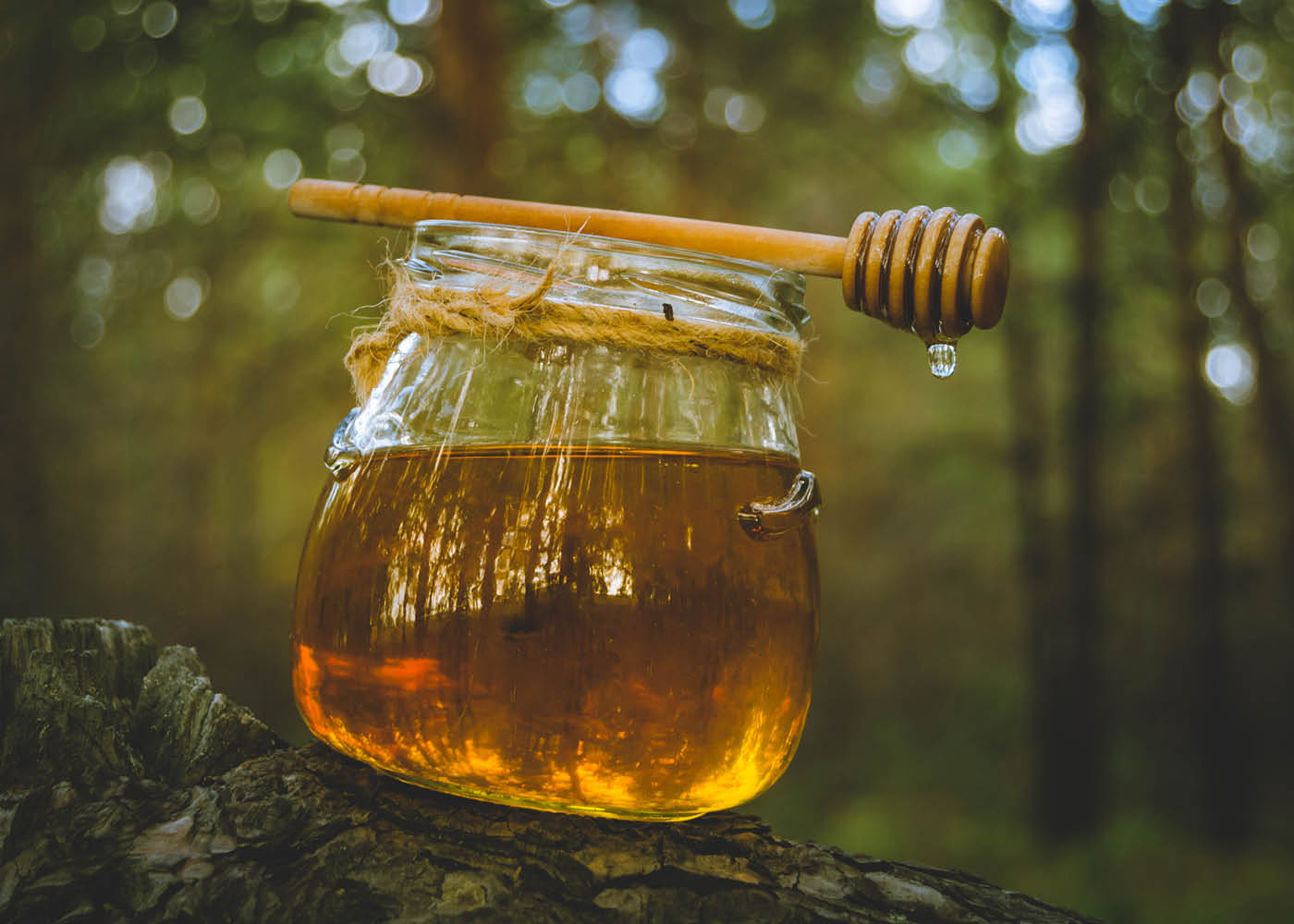As long as there has been civilization, and some might even say even before it, man utilized the panacea known as honey. Sweet, nutritive, and medicinal, this complex substance represents the pinnacle of symbiosis. From the plant's propagation cycle to the bee’s livelihood, to nourishment for animals and humans, honey connects the world. Moreover, it’s one of the few common threads in virtually every early civilization. As far back as 8,000 years ago in Spain there have been paintings of warriors attempting to gather honey. A post-Mesolithic rock painting in Rajat Prapat in Central India shows honey collection as well, and to this day honey is still used as a vital part of worship in many Indian temples. Meanwhile, the earliest known writing on honey came from the Egyptians in 5500 BCE, depicting keeping bees near temples to use honey for medicine, and to appease the gods1. Suffice to say, the history of honey is as exciting and complex as the substance itself.
Meanwhile, in modern times, we see honey relegated to two primary uses: as a sweetener for foods and beverages, and for its use in respiratory and throat health. While honey has other recorded uses in the modern era, none other has been researched and assessed like its ability to impact the lungs. Honey enjoys being in the minority of natural products that have been evaluated through the Cochrane review system, and to have come out with favorable conclusions. In their review of the pediatric use of honey in respiratory health, they found honey to be useful and effective.2
Primary research has also found that honey improves sleep quality. In a study of 300 children, participants were given two days of no treatment followed by two days of treatment with a honey containing product composed of eucalyptus honey, citrus honey, mint-flower honey, or placebo. The days immediately following administration, sleep latency and sleep maintenance were observed and were found to be improved in the three honey groups. As an aside, the authors also noted parents who administered these medicines also enjoyed higher sleep maintenance.3
With clinical trials supporting the use of honey, it begs the question as to how does it work? To begin to understand honey’s mechanism of action, one must first define what honey is from a biochemical standpoint. On its face, honey is a mixture of monosaccharides, disaccharides, and oligosaccharides, water, and “other molecules” which include amino acids, vitamins, enzymes, and minerals. When researchers fractionate the carbohydrates and water from the rest of the honey, they found that about 2-5% of the honey contains the B vitamins riboflavin, niacin, folic acid, pantothenic acid and vitamin B6. It also contains ascorbic acid (vitamin C), and the minerals calcium, iron, zinc, potassium, phosphorus, magnesium, selenium, chromium and manganese. Additionally, the enzymes that have been isolated from honey include amylase, peroxide oxidase, catalase and acid phosphorylase4.
One of the important subgroups found in honey is its antioxidant molecules which come in the form of ascorbic acid, manganese, chromium, and flavonoids. The flavonoids in honey are part of what gives honey its color5. As a rule, the darker the honey, the higher the flavonoid concentrations. Flavonoids work by quenching free radicals present in cellular metabolic functions thus protecting the cells that utilize them as part of their antioxidant system. Cellular oxidation is of course higher at times of stress or other challenges due to both the immune system and the stressor’s ability to create oxidative stress. Antioxidants such as flavonoids work to dampen the severity of this battle which leads to improvement in the severity of unnecessary oxidation.
Another important aspect of honey is its regional versatility. As the product of local flora and local bee species, each honey is like its own signature. For instance, Manuka honey, which is derived from honey distilled by bees from the manuka bush, Leptospermum scoparium, is extremely high in phenolic acids compared to other honeys. This is why it is the preferred honey for topical use as a sterilizing agent6. Meanwhile, local honey is associated with supporting healthy immune function to the local residents who ingest it regularly. With all this chemistry taken into account, and then considering that honey bees can collect pollen from over 200 flowers, each with their own unique DNA7 and distill this into honey, it is no wonder that proto-alchemists also wanted the ability to take the seeds of life, and transform it into gold.
The above is not by any means an exhaustive list of the mechanisms and chemistry of honey; it is but a sampling of what is known of its potential for soothing the respiratory system and throat. This is just a humble beginning look into all that can be achieved with honey at the helm. Given what is known about various herbal products and their own unique effects on health, it is no wonder that honey acts as an important anchor to so many potent herbal formulations. As honey has united man to honey, bee to plant, so too does honey unite the flavors and functions of our herbal formulations. As the adage goes, a spoonful of sugar does indeed, make the medicine go down (and work better).
References
- Andrzej K. Kuropatnicki, Małgorzata Kłósek & Marek Kucharzewski (2018) Honey as medicine: historical perspectives, Journal of Apicultural Research, 57:1, 113-118
- Oduwole, O., Udoh, E. E., Oyo-Ita, A., & Meremikwu, M. M. (2018). Honey for acute cough in children. The Cochrane database of systematic reviews, 4(4), CD007094.
- Cohen, H. A., Rozen, J., Kristal, H., Laks, Y., Berkovitch, M., Uziel, Y., Kozer, E., Pomeranz, A., & Efrat, H. (2012). Effect of honey on nocturnal cough and sleep quality: a double-blind, randomized, placebo-controlled study. Pediatrics, 130(3), 465–471.
- Meo, S. A., Al-Asiri, S. A., Mahesar, A. L., & Ansari, M. J. (2017). Role of honey in modern medicine. Saudi journal of biological sciences, 24(5), 975–978.
- Cianciosi, D., Forbes-Hernández, T. Y., Afrin, S., Gasparrini, M., Reboredo-Rodriguez, P., Manna, P. P., Zhang, J., Bravo Lamas, L., Martínez Flórez, S., Agudo Toyos, P., Quiles, J. L., Giampieri, F., & Battino, M. (2018). Phenolic Compounds in Honey and Their Associated Health Benefits: A Review. Molecules (Basel, Switzerland), 23(9), 2322.
- Johnston, M., McBride, M., Dahiya, D., Owusu-Apenten, R., & Nigam, P. S. (2018). Antibacterial activity of Manuka honey and its components: An overview. AIMS microbiology, 4(4), 655–664.
- Hawkins J., de Vere N., Griffith A. & Ford C. R. Using DNA Metabarcoding to Identify the Floral Composition of Honey: A New Tool for Investigating Honey Bee Foraging Preferences. PLoS One 10 (2015).

